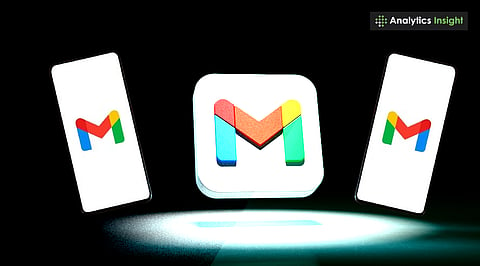

Gmail now offers simplified end-to-end encryption for business users.
Client-side encryption ensures that even Google cannot access email content.
Secure emails can be sent to Gmail and non-Gmail recipients.
As part of a drive to enhance enterprise email security, Google has announced End-To-End Security for Gmail in Google Workspace. This is part of an effort to improve organizational email security.
The update addresses escalating data privacy, compliance, and business email protection issues by enhancing ease of use and security. So, how has Gmail encryption evolved, and what is its effect on companies?
Earlier, encrypting business emails meant dealing with complex setups using Secure/Multipurpose Internet Mail Extensions (S/MIME) certificates. Companies needed to involve their own IT staff and external certificate providers just to protect the messages. With the new feature, Google eliminates these hurdles.
Today, users can turn on End-To-End Encryption (E2EE) from the Gmail compose screen by switching on ‘additional encryption.’ Email can be encrypted without a certificate exchange and third-party software dependencies, lowering day-to-day communication friction substantially.
The foundation of Gmail’s new security paradigm is Client-Side Encryption (CSE). Under CSE, emails are encrypted on the sending device before transmission. This means that even Google won’t be able to view the content, providing enterprises with increased control over confidential information.
Most importantly, the encryption keys belong to the organization, not Google. This enables enterprises to retain control of their information while securing communications from outside threats.
Also Read: How to Spot Fake Emails in Gmail: Easy Tips
Most institutions use S/MIME for email encryption. Since Google's advanced encryption also supports S/MIME, institutions can still use their existing encryption protocol. This preserves existing protocols and enhances and simplifies E2EE features in Gmail to take advantage of them.
The improvements to email encryption in Gmail allow IT managers to have better control. They may set policies that require CSE for every email, meeting invitation, and Drive document. This deliberate action ensures that sensitive information is automatically encrypted, minimizing unintentional sharing risk.
In addition, managers and users can oversee the digital signatures and encryption certificates in Gmail. Organizations with higher security requirements can implement PIV/CAC smartcards and other organization-issued hardware keys that provide secure authentication and encryption management.
Also Read: Google Confirms 2.5B Gmail Users Caught in Massive Data Breach
Although Gmail’s new encryption vastly enhances security, it is worth mentioning here that the encryption keys are still in organizational control. Unlike the standard end-to-end encryption, where only the sender and the recipient have the keys, this model has the organization in control of accessing the keys.
Thus, while the system guards against illegal outside intrusion, it does not completely exclude the possibility of inside access to encrypted material. Companies should consider this factor in accordance with their compliance and privacy needs.
This functionality is supported solely for Google Workspace Enterprise Plus, Education Plus, and Education Standard users. Such E2EE features are not supported on other versions of Workspace, like Business Starter, Business Standard, Business Plus, and legacy G Suite.
The limited availability reinforces Google’s focus on organizations with advanced security and compliance needs.
Google’s announcement of E2EE in Gmail is a step in the right direction toward enhancing the overarching security for work emails. If extended support is added on a wider scale, made easier to use, and fine-tuned controls are provided to administrators, communications can be secured more effectively for sensitive information.
As cyberattacks and data privacy considerations dominate conversations, these improvements offer an effortless way of increasing safeguarding methods without disturbing ease of use. For companies handling delicate customer records, financial documents, or proprietary tools, the new Gmail E2EE has the potential to be a game-changer.
1. What is Gmail’s new encryption feature?
Gmail now offers end-to-end, client-side encryption for business emails, ensuring data privacy and secure communication with all recipients.
2. Who can use Gmail’s enhanced encryption?
Available to Google Workspace Enterprise Plus, Education Plus, and Education Standard users; other tiers and legacy G Suite users cannot access it.
3. Can I send encrypted emails to non-Gmail users?
Yes, non-Gmail recipients receive a secure link to view emails without needing a Google account.
4. How does client-side encryption work?
Emails are encrypted on the sender’s device, preventing Google or third parties from accessing the content, with keys managed by the organization.
5. Does this replace S/MIME for organizations?
No, it integrates seamlessly with existing S/MIME setups, maintaining consistent encryption standards while simplifying email security management.
